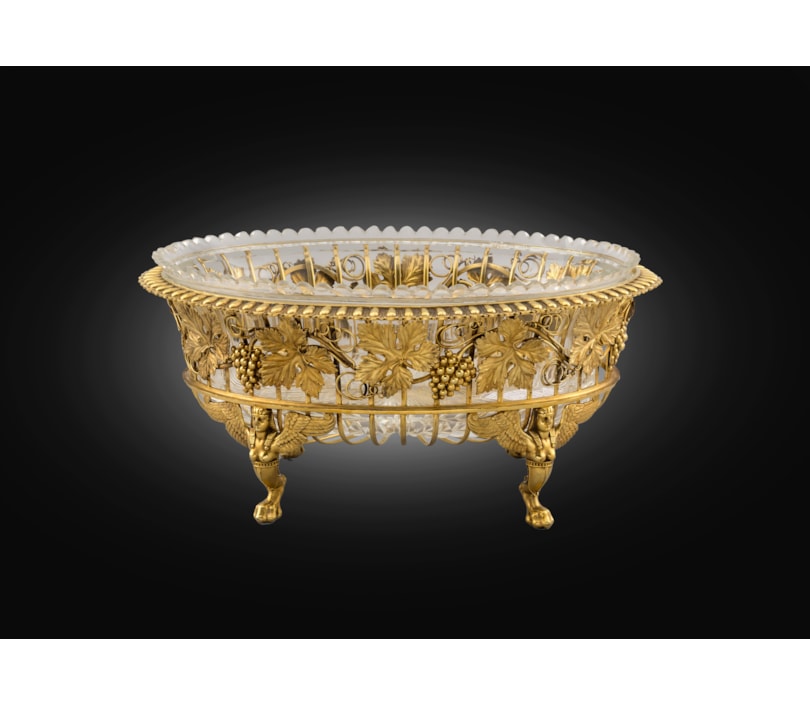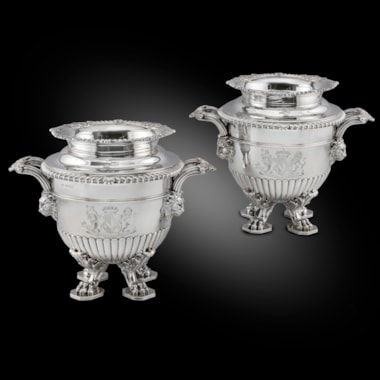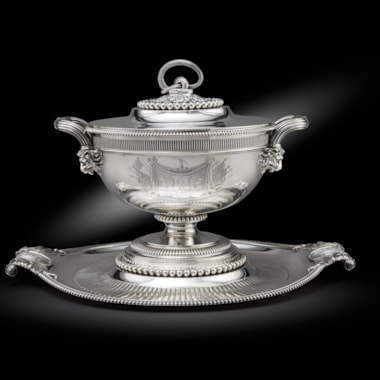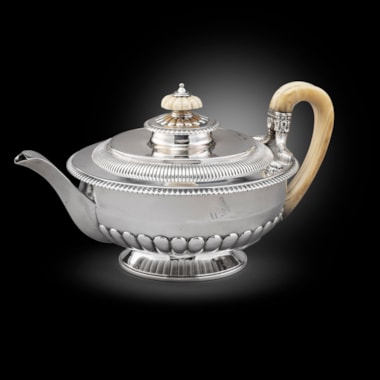The use of the Bacchic grapevines with the Egyptian sphinx were the height of fashion in Regency England. The silversmiths Scott and Smith were associated with the great firm of Rundell, Bridge & Rundell, who received the royal warrant in 1797 and was a personal favourite of the Prince of Wales and the Duke of York. In 1806, George IV, as Prince of Wales, commissioned "The Grand Service" from this same firm. This service included pieces wrought by Digby Scott, Benjamin Smith II, and Paul Storr, all in varying designs featuring Egyptian, Greek, Roman, and neo-rococo motifs unified by a rich gilding and still in use by the monarchy today.
The crest is that of Lord Foley, a title dating from 1776. The family seat was Witley Court in Worcestershire, on which the third Baron spent huge sums around 1805, including retaining the services of John Nash. The third Baron, Thomas Foley VII, succeeded to the title and house on his father's death in 1793 and was married in 1806 to the daughter of the Duke of Leicester. The grand Italianate manor house, Witley Court, was sold to the Earls of Dudley following Foley's death in 1833. The Dudleys were forced to sell the house after WWI and in 1937 a major fire left the manor a spectacular ruin. The ruins, gardens, and fountains are now maintained by English Heritage and Grade I listed.
The basket of oval wirework frame with applied grapevine ornament, the rim with egg and dart design, raised on four finely detailed legs modelled as a sphinx with spread wings and paw feet, the central petal form medallion with armorial engraving.
The partnership of Digby Scott and Benjamin Smith produced some of the greatest silver works of the early 19th century. Scott and Smith jointly ran workshops located in Greenwich, England from 1802 to 1807 and during their brief partnership were the principal suppliers of silver masterpieces to the esteemed firm of Rundell, Bridge & Rundell. At the time London's most prestigious firm, these jewellers and silversmiths supplied the official plate ordered by the Lord Chamberlain's office, and were the official "Jeweller, Gold and Silversmiths to the Crown" from 1798 to 1843. Working in the cusp of the late Georgian and early Regency periods, the works of Scott and Smith often feature elements of the classical revival style such as grapevines and rams' heads, all crafted in exquisite, sumptuous detail. One of their most renowned collaborative efforts, the Duke of York Baskets, created for Frederick Augustus (1763-1827), second son of George III, is currently on display at the Powerhouse Museum in Australia.
You May Also Like








































































